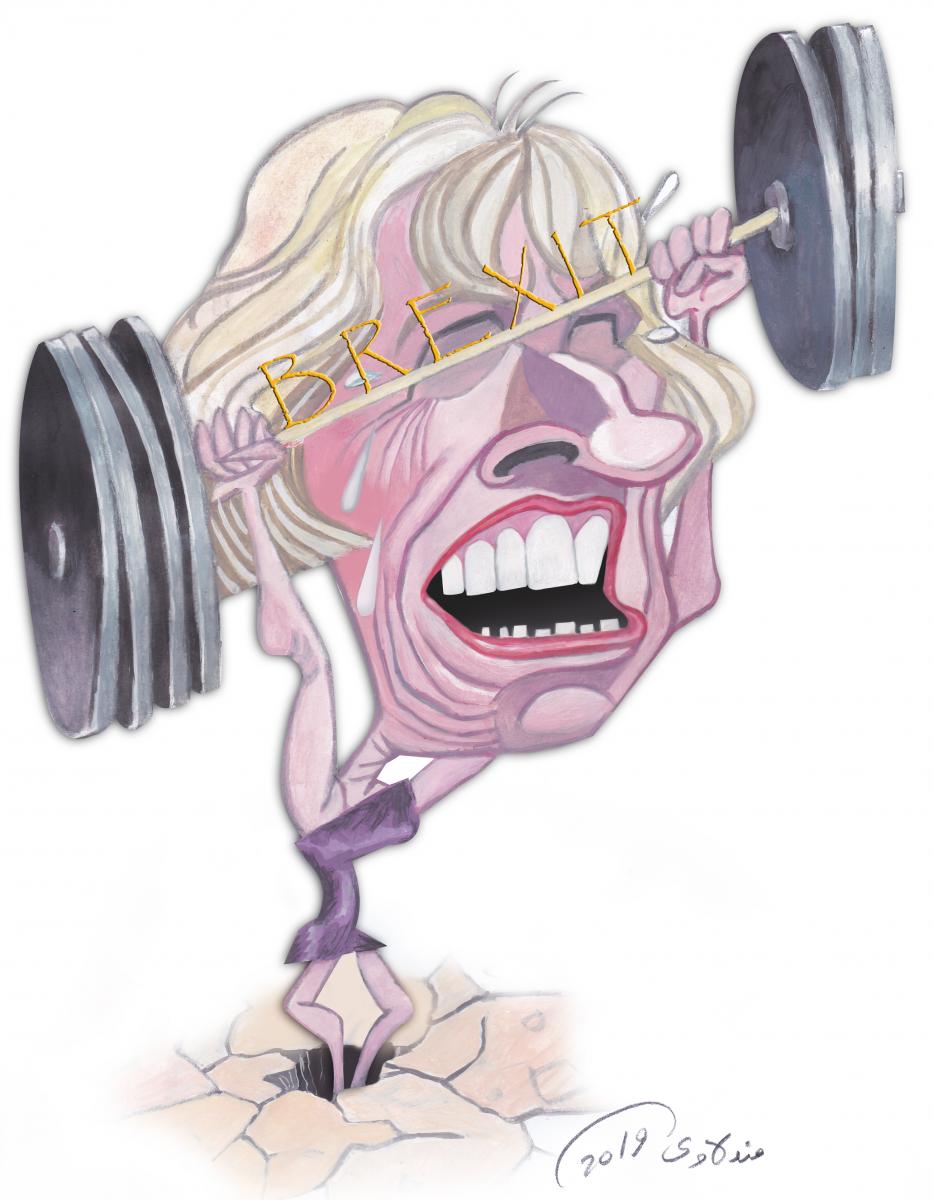
1. Early Life and Early Tragedy
Theresa May was born on October 1, 1956, in Sussex to Huburt Braiser and Zaidee Mary and grew up as an only child. Her father was a clergyman and he would eventually become a vicar in the Church of St. Mary the Virgin in Oxford, as such the famous University City became the place of upbringing for the young May. Theresa May attended school at the then newly formed Wheatley Park School and subsequently went to Oxford University where she graduated with a degree in geography in 1977. Shortly after graduating, tragedy struck the young May as her father died in 1981 after a car accident and her mother died from M.S. a year later, as a result neither Huburt nor Zaidee got to see their daughter go into politics.
2. Entry Into PoliticsBefore going into politics, May would work in the financial sector having worked for the Bank of England and the Association for Payment Clearing Services (APACS). She would eventually become a councilor for the London Borough of Merton where she served as the Chairman of Education and Housing Spokesman. The first election she stood for was the 1992 General Election, where she was the Conservative candidate for the North West Durham seat, but she lost to the Labor candidate Hilary Armstrong. She then ran in the 1994 Barking by-election but lost again to the Labor candidate Margaret Hodge. She finally had her big break in 1997, when she was selected to run as the Conservative candidate for the new Maidenhead seat and successfully won having gained almost 50 percent of the vote.
3. Shadow Cabinet PositionsRight from her first entry into parliament, she served in shadow cabinets, her first shadow cabinet position was Shadow Spokesman for Schools, Disabled People, and Women. In 1999, she became the Shadow Education and Employment Secretary, and she eventually became the Chairman of the Conservative Party in 2002. Between 2003 and 2004, she held several cabinet positions such as Shadow Secretary of State for the Family. After David Cameron was elected the Conservative Party leader in 2005, he appointed her the Shadow Leader of the House of Commons. This wouldn’t be the last time Cameron gave her an important post, fast forward to 2010 Cameron, as the newly elected Prime Minister, appointed her as the Home Secretary.
4. Home Secretary
As Home Secretary, Theresa May made the controversial decision to cut police budgets which subsequently caused a reduction in the number of police officers in the streets of England and Wales. Many believe that these cuts are a factor behind the stabbing incidents which have accelerated since the mid-2010s. She also had a hardline stance against illegal migration to the UK and refused the European Union’s proposed compulsory refugee quotas. In 2016, she campaigned for remaining in the EU by arguing that it would be better to control borders while staying in the organization rather than leaving it.
5. Becoming Prime Minister
In 2016, shortly after the Brexit referendum resulted in Leave winning by 52 percent of the vote, David Cameron resigned as Prime Minister. Theresa May was one of the Conservative leadership candidates and she convincingly won the first round of votes, she would later become the new Prime Minister after Andrea Leadsom stepped down from the race, leaving May as the sole candidate. When she became Prime Minister, she stated that she was committed to honoring the result of the referendum and wanted to get the best possible exit deal with the EU.
6. May’s Miscalculations and Withdrawal Bill
One year after getting appointed Prime Minister, she called a general election wanting to gain a bigger majority in parliament, thereby making it easier for her to pass decisions to parliament. This decision was a major miscalculation as the Conservatives actually lost seats, while they didn’t lose the majority they were forced to make a coalition with the Northern Irish Democratic Unionist Party. In 2018, she published her withdrawal plan which was approved by the EU but criticized both by the British public and parliament. The reason for this was because the withdrawal plan didn’t include important issues like the Northern Irish border and delayed other issues like the customs union; moreover, Brexiters didn’t think it was hardline enough. The rest of the year was one of turmoil for May, as she had her Withdrawal Agreement rejected in parliament three times and faced a vote of no confidence from within her party and then within parliament, surviving both. In 2019, she agreed to hold cross-party talks with opposition leader Jeremy Corbyn in order to find a solution to the deadlock. The talks did not amount to anything and the Prime Minister faced serious calls to resign from her port.
7. Tearful Teresa Resigns as Prime Minister
In an emotional statement on 24 May, Theresa May said she will quit as Conservative Leader on June 7, drawing her fraught three-year premiership to a close. Speaking in Downing Street, May said it had been “the honour of my life” to serve as Britain’s second female prime minister. Her voice breaking, she said she would leave “with no ill will, but with enormous and enduring gratitude to have had the opportunity to serve the country I love”. She said she had done her best to deliver Brexit and it was a matter of “deep regret” that she had been unable to do so. May finally decided to yield to the inevitable following a meeting with Graham Brady, chairman of the backbench Tory 1922 committee, where he made it clear that she stood no chance of winning parliamentary backing for her revamped Brexit deal and had lost the confidence of her party.









